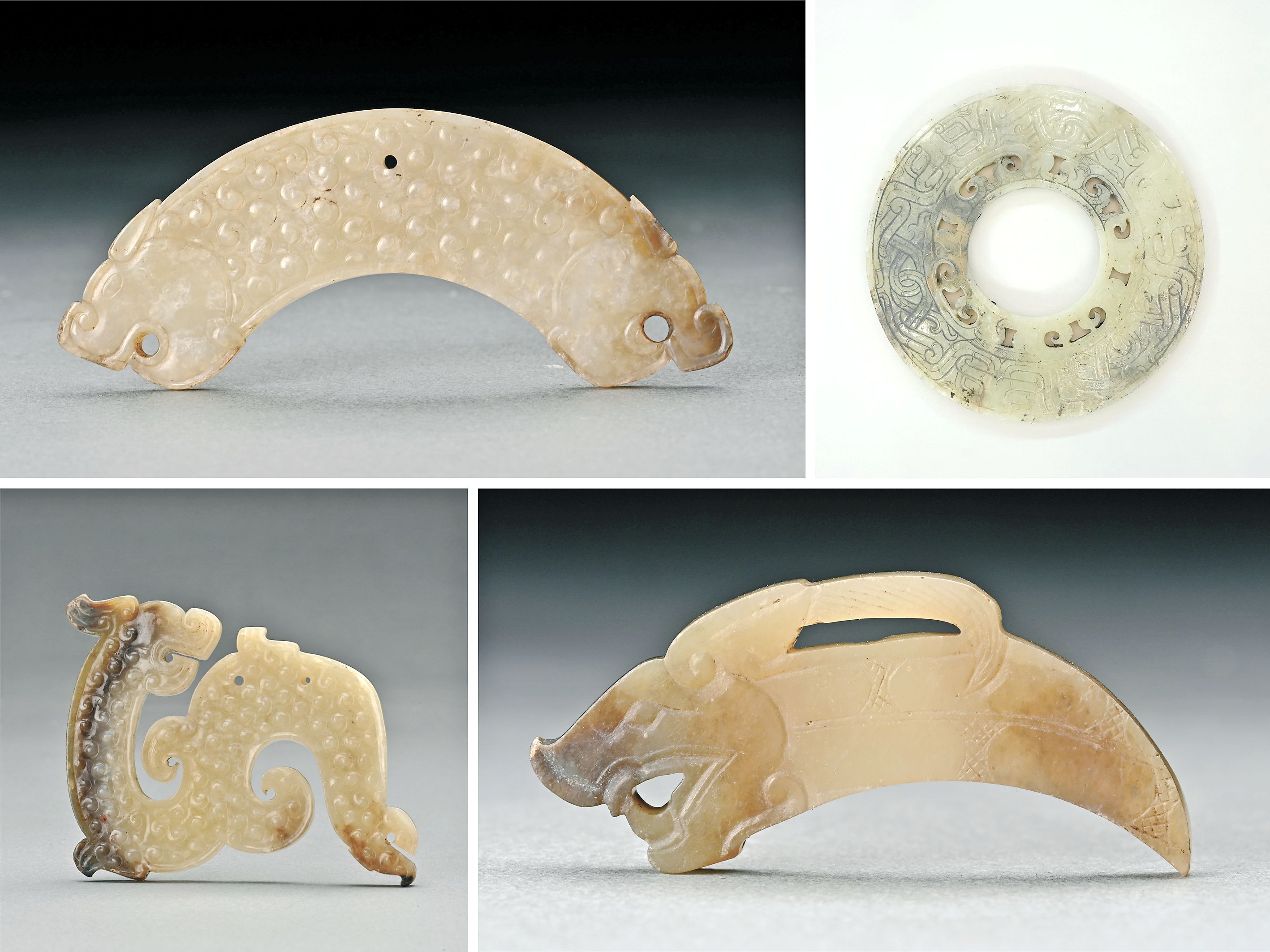China unveils top archaeological discoveries of 2024
Writer: | Editor: Zhang Zhiqing | From: | Updated: 2025-02-27
Six significant archaeological sites in China were named the top new discoveries in 2024, announced last week at an annual forum hosted by the Chinese Academy of Social Sciences.
The Dadong paleolithic site in Helong City, Jilin Province, is among the honorees. Situated at the eastern foot of the Changbai Mountains, the site covers an area of over 4 square kilometers. It is currently the largest and most culturally rich late Paleolithic wilderness site discovered in Northeast Asia, renowned for providing the region’s clearest and oldest cultural sequences.

Jade pieces unearthed from the Wuwangdun Tomb in Huainan City, Anhui Province. Xinhua
The Xiatang neolithic site in Xianju County, Zhejiang Province, is crucial evidence of China’s 10,000-year cultural history, providing new material for the study of regional cultural evolution and the history of rice farming. The site showcases a novel settlement pattern and social organizational structure during the Shangshan Cultural period (a Neolithic culture from 11,000 to 8,500 years ago in the middle and western part of Zhejiang), making it one of the most complete and well-structured settled villages among early Neolithic sites in China.
Another major discovery is the Wuwangdun Tomb in Huainan City, Anhui Province. This tomb is the largest, highest-ranking, and most complex burial site from the ancient Chu state, dating back over 2,200 years. The excavation offers valuable insights into burial practices and the culture of the Chu state, especially following its migration eastward.
The Siwa site in Gansu Province is situated west of Jiulong Mountain, with remains mainly distributed on the gently sloping land in front of the mountain. Discoveries include remnants of the Majiayao culture, which showcases the developmental level and civilization of the early societies on the Loess Plateau in western China 5,000 years ago.
The Zhouyuan site in Baoji, Shaanxi Province, is known for its large rammed-earth structures from the pre-Zhou Dynasty period. The discovery of the triple city walls at Zhouyuan not only advances the understanding of the form and nature of the Zhouyuan settlement but also provides indispensable research materials for the history of urban development in China.
The Jingdezhen ceramic industry sites in Jiangxi Province span more than 600 years and encompass the Yuan (1271-1368), Ming (1368-1644) and Qing (1636-1912) dynasties. The discoveries provide first-hand data for studying various aspects such as the appearance of Jingdezhen’s ceramic industry, the absorption and advancement of diverse ceramic production technologies, and the unique art reflected in the reuse of kiln bricks in urban architecture.
The forum, first held in 2002, serves as a platform for announcing and exchanging the latest archaeological achievements and findings in China. (Xinhua, SD-Agencies)